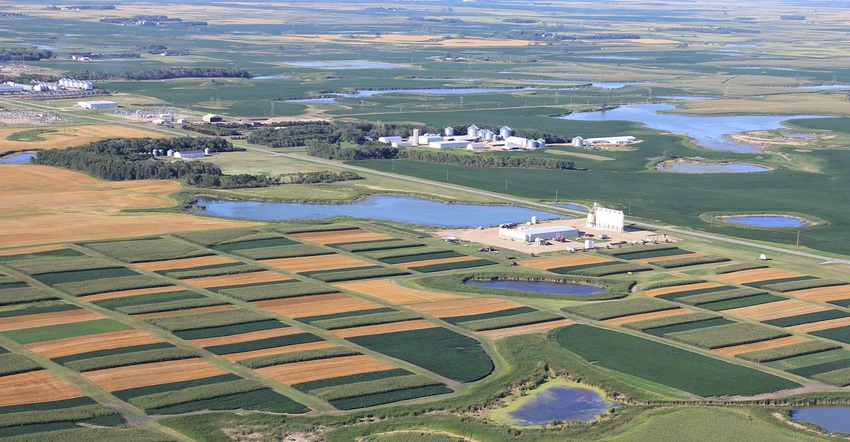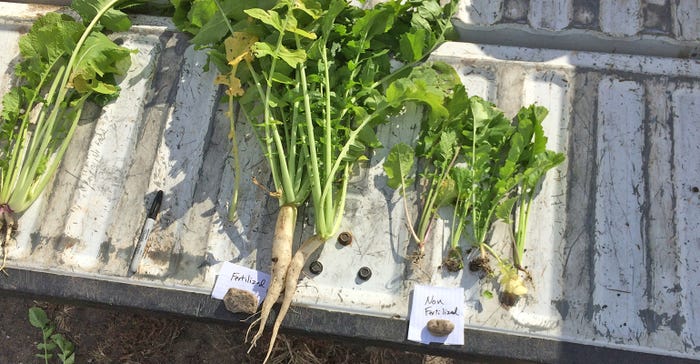December 6, 2017

By Lon Tonneson
Want to know some things that work and don’t work when it comes to strip-till and no-till in eastern North Dakota?
Look to the Conservation Cropping System Project near Forman, N.D. The CCSP has been no-tilling and strip-tilling, planting cover crops and experimenting with different rotations on 130 acres for about 15 years. Some lessons learned at the CCSP are:
1) Strip-till corn consistently yields 7 bushel more than no-till corn.
2) No-tilling corn into wheat stubble works in a dry year, but not on a wet one.
3) Sometimes the best corn hybrids in conventional-till or strip-till systems don’t do well in no-till. Once, the best hybrid in southeast North Dakota in conventional tillage dropped off about 30 bushels in no-till. The typical yield drag is 4-7 bushels per acre.

COVER CROPS: Radishes were one of the many cover crops planted following wheat at the CCSP farm.

4) No-till seeding soybeans into live rye works better than seeding soybeans in black ground during an average to wet year.
5) To get a good stand of alfalfa, no-till alfalfa seed into winter wheat stubble during the first part of August. The wheat stubble catches snow, which protects the young alfalfa plants from the cold and increases the amount of moisture they have in the spring.
6) Planting corn into fall sprayed out alfalfa will either be your best or worst crop. If the growing season is dry, the yield will be lower than normal. If the growing season is wet, the corn will be able to use the extra nitrogen generated by the alfalfa. If there is good moisture, the corn no-tilled into sprayed out alfalfa will out-perform strip-tilled corn on soybean ground.
7) No-till corn-on-corn never produces well.
8) Single disk drills can plant into unworked soybean ground as early, or earlier, than in tilled ground.
9) Beware of “Variety Not Stated” cover crop seed. Some varieties of radish will bolt and go to seed. Big mistake!

BIO STRIP-TILL: Alternating rows of radishes and field peas show promise as a bio strip-till practice.

10) Don’t try planting in sticky soils with new disk openers that haven’t been polished. You need to run them through a few acres of dry ground first or you will spend a lot of time unplugging them.
11) Lightly strip-tilling a second time during a wet spring can get you planting faster.
12) Bio strip-till shows promise. It involves planting different cover crops in alternating strips 30-inches apart. After winter wheat was harvested, the CCSP planted alternating strips of radishes and field peas. Then the following spring, the CCSP came back and planted corn on the radish rows. The bio strip-till has outperformed conventional strip-till and cut gully erosion.
For more information, contact Kelly Cooper, CCSP manager, at 701-799-1180 or [email protected], or visit notillfarm.org.
You May Also Like




